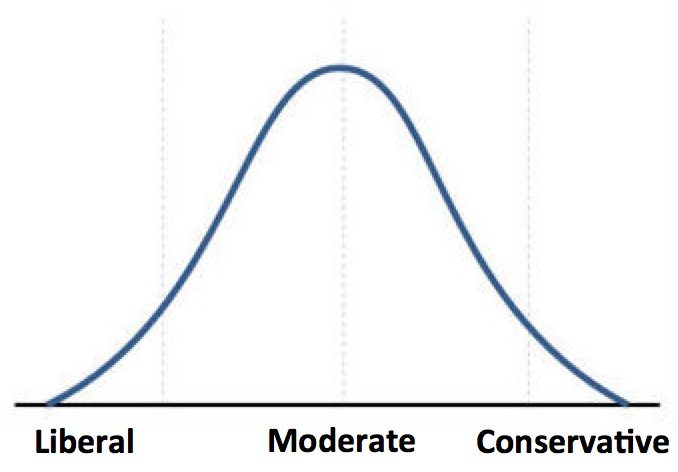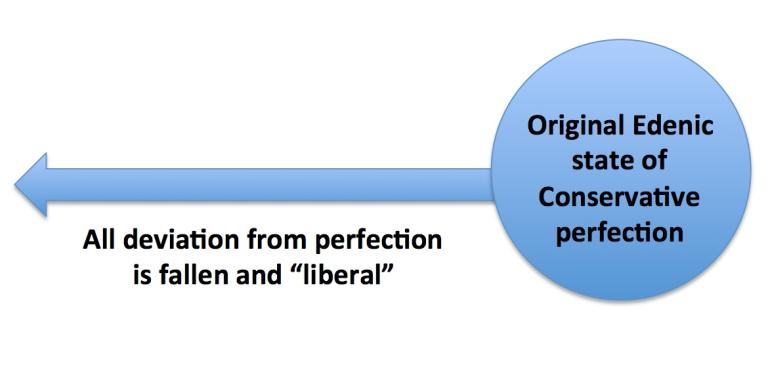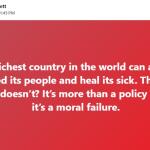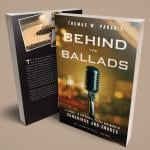Every once in a while, this needs to be said: “Liberal” politics and “liberal” theology are not the same thing. “Conservative” politics and “conservative” theology are not the same thing. Right-wing politics do not make one theologically “conservative” or orthodox. Left-wing politics do not make one theologically “liberal” or heterodox.
The theological spectrum does not mirror the political spectrum for many, many reasons, the most important of which being that there is no such thing as the “theological spectrum.”
Here is your basic conservative-liberal spectrum:

That’s often imprecise and misleading when applied to politics, but it’s broadly serviceable enough in that context that we still find it useful.
I am a political “liberal” who is “left of center,” etc. Some folks have political views that are farther “to the left” than mine and many folks have political views that are more “to the right” than mine, and it can be, in some ways, useful to plot us all onto the spectrum above as a kind of shorthand convenience for discussing our political differences.
But there are still a lot of problems with this spectrum metaphor. One of the biggest ones is that we tend to think of the spectrum pictured above as something more like a Bell Curve:

That is grossly misleading. It’s inaccurate, untrue, and produces a misshapen idea of American politics. It misleads us to imagine that there is some mass of middling moderates — an idea that is, as Ezra Klein says, “a statistical myth.”
What happens, explains David Broockman, a political scientist at the University of California at Berkeley, is that surveys mistake people with diverse political opinions for people with moderate political opinions. The way it works is that a pollster will ask people for their position on a wide range of issues: marijuana legalization, the war in Iraq, universal health care, gay marriage, taxes, climate change, and so on. The answers will then be coded as to whether they’re left or right. People who have a mix of answers on the left and the right average out to the middle — and so they’re labeled as moderate.
But when you drill down into those individual answers you find a lot of opinions that are well out of the political mainstream. … The result is that voters who hold gentle opinions that are all on the left or the right end up looking a lot more extreme than voters who hold intense opinions that fall all over the political spectrum.
Notice how Klein and Broockman refer to “the political spectrum” even while they’re in the midst of pointing out its flaws. That’s a reflection of how accustomed we are to discussing political views in terms of such a “spectrum” of left and right, liberal and conservative. We do that because, despite its flaws, the “political spectrum” metaphor is still broadly useful when discussing politics.
In the context of theology, though, such talk of “left and right” isn’t just useless, but bewildering. We know, generally, what is meant when we describe someone as a “left-wing” or a “right-wing” politician. But describing someone as a “left-wing” or a “right-wing” theologian is meaningless. “Right-wing” is a political term, not a theological one. The descriptors of “left” and “right” and the implicit metaphor of the “political spectrum” are of no use when we try to apply them to the diversity of Christian theological perspectives.
The notion of a “theological spectrum” running from liberal to conservative isn’t useful either. Just consider what someone is trying to say if they describe a theologian as an “ultra-conservative Calvinist.” That person’s theology will be utterly incompatible with the views of another theologian described as an “ultra-conservative Catholic.” But it would only further confuse things to suggest that an “ultra-conservative” Calvinist is somehow an “ultra-liberal” Catholic, or vice versa. The liberal-conservative spectrum is of no use here.
So why is it, then, that we persist in falling back into using those terms — “liberal” and “conservative” — when discussing theological views? Why do we still have this habit of appealing to some metaphor of a “theological spectrum” when such a thing would be impossible to graph, a visual metaphor that cannot be visualized?
Partly, I think, this is due to habit. We have a habit of using such terms when discussing political conflicts, and so when we encounter conflicts in theological views we adopt and adapt that political terminology. That puts us two steps removed from the reality we’re trying to discuss. In politics, the “spectrum” is a metaphor. In theology, the political metaphor becomes a double metaphor — an analogy of an analogy, a copy of a copy. That’s unhelpful.
Another reason we do this, though, is because “liberal theology” is the actual name of an actual thing. But that term, “liberal theology” does not at all mean the same thing as what we mean when we describe theology as “liberal” by appealing to the double-metaphor of the political spectrum layered onto theological disputes. Confusing those two meanings of the words “liberal theology” is every bit as misleading as confusing Jesus with Jesús Alou.
The actual thing that is actually and accurately called “liberal theology” is a strain of post-Enlightenment Christian scholarship that exists in history. Schliermacher was a liberal theologian. That doesn’t mean he is “to the left” of Augustine or Calvin or Barth on some imaginary or imaginable “theological spectrum.” Theology, again, doesn’t have a left-right spectrum. Augustine spent a great deal of time condemning those he regarded as in error, but he never thought of himself as a “conservative” criticizing “liberals.” Barth’s response to people like Schliermacher wasn’t to propose a “Neo-conservative” theology, but rather a Neo-orthodoxy.
Thus part of the problem with Thomas Kidd’s recent clumsy attempt to impose a political-spectrum framework as a definition of evangelical theology was that it was anachronistic. Kidd seeks to classify both universalism and a refusal to adopt the Gospel of Nicodemas’ notion of Hell as forms of “liberal” theology. But both of those views have a long pedigree within the main streams of Christianity dating back to the earliest days of the church. The third-century theologian Origen may not have lived up to all of Augustine’s ideals of orthodoxy, but it makes no sense to denounce him as a “liberal,” to imply that he was led astray by the European Englightenment, or that he was somehow a student of Schliermacher. Ditto for, say, Gregory of Nyssa or Julian of Norwich or any of the many other pre-modern Christians who had similarly Rob-Bell-ish things to say about the possibility of universal reconciliation.
Fine, then, what if we dispense with the political terminology and envision the political spectrum as something more like this?

Two fatal problems here. One is specific to the discussion of white evangelicals in America, the other is more general.
The tribal gatekeepers of white evangelicalism almost always implicitly appeal to some version of this orthodox-heterodox spectrum, presuming that they personally, and that white evangelicalism as a whole, are self-evidently located at the far-right end of that spectrum.
That presumption is nonsense. White evangelical theology in America can’t be neatly plotted onto any one location on such a spectrum. White evangelical theology — to the extent that it’s even identifiable as a coherent thing — is idiosyncratic, individualistic, eclectic, a-historical and, well, generally just a mess. It encompasses those who denounce glossolalia and those who require it — and neither of those positions can neatly be described as “orthodox.” It includes much that can safely be located within the broad sphere of Christian orthodoxy — although not at its center. And it includes much that falls far, far outside of that general sphere (premillennial dispensationalism anyone?). Evangelical theology is not consciously guided by tradition — which is to say that it tends to regard itself as anti-traditional, or as supplanting tradition for some purer, more primitive strain of Christianity while simultaneously being deeply shaped by tradition in various conflicting ways of which it remains ignorant and unaware.
Any talk of Christian “orthodoxy” has to at least contend with the historic creeds of the faith, but white evangelicalism in America has dispensed with those creeds — seeing them as a tool of “liberal” mainline Protestantism or of papists. Those creeds have been replaced by “statements of faith,” many of which go on for thousands of words, raising curious adiaphora to the level of dogma or incorporating flagrantly heterodox innovations.
But here is the larger problem with this notion of an orthodox-heterodox “theological spectrum” — and part of what sinks Kidd’s gatekeeper screed. When people appeal to such a spectrum of orthodoxy, they’re not really referring to the simple left-right diagram above. What they’re really appealing to is something more like this:

This is the worst. This is an efficient machine for manufacturing stupid. This is a retrovirus of the brain that ensures those infected by it will never allow themselves to learn anything, ever. This needs to be killed with fire.












